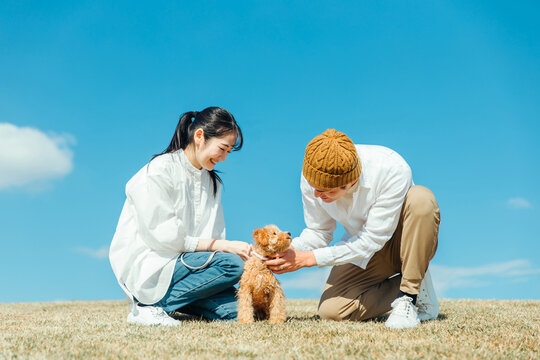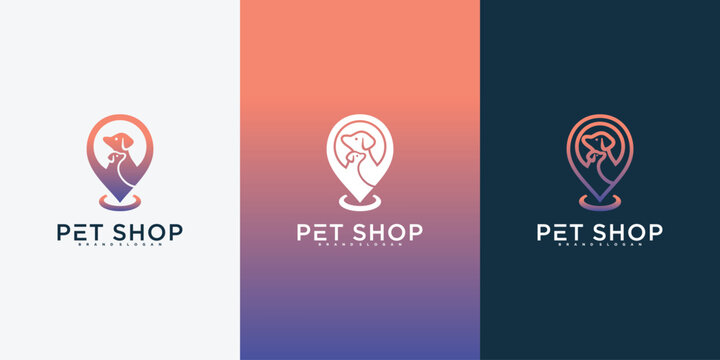Bringing a furry friend into your family can be an incredibly exciting and rewarding experience. However, it’s important to remember that adding a dog to your household is a big decision that requires careful consideration and planning. From choosing the right breed to preparing your home for their arrival, there are a lot of factors to keep in mind when getting a dog. In this blog post, we’ll be sharing some top tips for successfully bringing a new pup into your family and creating a happy and healthy home for them. So if you’re thinking about getting a dog or have recently welcomed one into your household, keep reading for some expert advice on how to make the transition as smooth as possible.
The Benefits of Getting a Dog for Your Family
Getting a dog can bring many benefits to your family. They provide unconditional love and loyalty, and they can be great companions for children. Dogs can also help teach responsibility and improve physical activity by going on walks or playing in the backyard.
Studies have shown that having a dog in the home can reduce stress levels and increase overall happiness. Furthermore, dogs are known to provide emotional support through tough times such as illness or loss of a family member.
It is important to note that getting a dog requires commitment from all members of the family; they require proper care, attention, and regular exercise. With careful consideration and planning, adding a new furry friend to your family can create wonderful memories that last for years to come.
Factors to Consider Before Getting a Dog
Before getting a dog, it’s important to consider several factors to ensure that you and your family are ready for the responsibility. First, assess your lifestyle and determine if you have enough time to devote to a pet. Dogs require daily exercise, attention, and care. Second, consider the cost of owning a dog, including food, supplies, and veterinary care. Third, think about the size of your home and yard. Some breeds require more space than others. Fourth, research different breeds to find one that fits your family’s needs and personality. Finally, make sure all family members are on board with getting a dog and understand their role in caring for it. By taking these factors into consideration before getting a dog, you can ensure a smooth transition for both your family and your new furry friend.
How to Choose the Right Breed for Your Family
When choosing a breed for your family, it’s important to consider factors such as size, energy level, and temperament. Family-friendly breeds like Golden Retrievers and Labrador Retrievers are popular choices because they are known for being friendly, loyal, and great with children. However, it’s important to note that each dog is an individual and may not fit the typical breed characteristics. Researching specific breeds and meeting individual dogs before making a decision can help ensure a good match for your family’s lifestyle and needs. Additionally, consider adopting a mixed breed dog from a shelter as they can often make wonderful family pets and are in need of loving homes.
Preparing Your Home for a New Dog
Before bringing a new dog into your home, it’s important to make sure that your living space is safe and comfortable for them. Dog-proofing your home is crucial to prevent any accidents or injuries. This includes securing loose wires, removing toxic plants, and keeping hazardous chemicals out of reach.
Your new dog will also need a designated space to call their own. This can be a crate or a bed in a quiet area of the house where they can retreat when they need some alone time. Make sure to provide plenty of toys and chew items to keep them entertained.
It’s also important to establish boundaries for your new dog. Decide which areas of the house are off-limits and which furniture they are allowed on. Use baby gates or closed doors to restrict access if necessary.
Finally, make sure you have all the necessary supplies before bringing your new dog home. This includes food and water bowls, a leash and collar, and any necessary grooming tools. With a little preparation, you can ensure that your new furry friend feels right at home in no time!
Introducing Your New Dog to Other Pets and Family Members
When introducing your new dog to other pets in the household, it’s important to do so gradually. Positive reinforcement is key when bringing together animals from different households or species. Keep initial meetings brief and separate, allowing each animal to get comfortable with the other’s scent and presence before introducing them face-to-face.
It’s also important to supervise all interactions between pets until you’re confident that they can coexist peacefully. If any aggression or tension arises during introduction attempts, keep the animals separated and seek advice from a professional trainer or behaviorist.
Introducing your new dog to family members should also be done slowly and positively. Allow everyone in the family time to interact one-on-one with the dog individually before gathering everyone together for a big introduction. Remind children of appropriate behavior around dogs, such as not pulling on tails or ears.
With patience and proper introductions, your new dog will become a well-loved member of both your human and animal families!
Establishing Rules and Boundaries for Your New Dog
When bringing a new dog into your home, it’s essential to establish rules and boundaries early on. This will help your canine companion to understand what is expected of them, feel secure in their environment, and prevent any behavioral issues from developing.
Some important rules to establish include where the dog is allowed to go in the house, what items are off-limits (such as shoes or furniture), when and where they should eat, and how they should behave around other household members.
To reinforce these rules, use positive reinforcement techniques such as treats or praise when your dog follows them correctly. Consistency is key; everyone in the household needs to enforce the same rules consistently.
It’s also crucial to set aside time each day for playtime and exercise with your new pet. Interaction with toys can be used as both a reward for good behavior and an outlet for excess energy that could otherwise lead to destructive behaviors.
By establishing clear boundaries early on and enforcing them consistently, you’ll create a healthy environment for both you and your furry friend.
Training Tips for a Well-Behaved Dog
Socialization: The Key to a Well-Adjusted Dog
Socialization is one of the most important aspects of training a new dog. Positive reinforcement is an effective tool to help your furry friend learn desired behaviors and get comfortable in new situations. One way to socialize your dog is through exposure to other dogs, people, and environments from a young age. This helps them become confident and well-adjusted in various settings. Consistency is key when socializing your pup- make sure everyone who interacts with them has the same rules and expectations for their behavior. With patience and dedication, you can ensure that your new dog becomes a happy, friendly member of your family!
Consistency is Key: Establishing Rules and Boundaries
When it comes to training your new dog, consistency is key. This means establishing clear rules and boundaries from the start and being consistent in enforcing them. Use positive reinforcement techniques like treats or praise to reward good behavior, and redirect bad behavior with a firm “no” or other command. Remember to be patient – training takes time, but it’s worth it in the end.
One important phrase relevant to getting a dog is ‘positive reinforcement’. Using this technique can help encourage desired behavior in your pet. Another key phrase is ‘redirect bad behavior’, as you want to discourage undesirable behaviors early on before they become habits that are difficult to break.
Positive Reinforcement: Rewarding Good Behavior
When it comes to training your new dog, positive reinforcement is key. This involves rewarding your dog for good behavior rather than punishing them for bad behavior. Positive reinforcement can include treats, praise, or even a favorite toy. By using rewards and positive reinforcement consistently and immediately after the desired behavior occurs, you are teaching your dog what behaviors you want to see more of.
Consistency is important when using positive reinforcement – make sure everyone in the family uses the same rewards and rules with your new furry friend. Additionally, be patient while training; it takes time and effort to properly train a well-behaved dog. With consistency and patience, you can help create a happy home environment for both you and your new canine companion!
Patience and Persistence: Overcoming Training Challenges
Training a dog takes patience and persistence. While some dogs may quickly pick up on new commands, others may require more time and repetition. One key tip is to keep training sessions short but frequent, focusing on one command at a time until it’s mastered before moving onto the next one.
Consistency is also crucial in training a well-behaved dog. Use the same commands each time and provide rewards or positive reinforcement when your furry friend follows through. If your dog struggles with certain behaviors, such as potty training or chewing on furniture, try different approaches until you find what works best for them.
Remember that every dog is unique and will respond differently to various training techniques. Stay patient and persistent while working with your pup – eventually, they’ll learn good habits that benefit both themselves and your family dynamic.
Common Mistakes to Avoid When Getting a Dog
Rushing into Getting a Dog: Taking Time to Choose the Right Pup
When getting a dog, it can be tempting to rush into the decision and choose the first cute puppy you see. However, this is one of the most common mistakes that people make when getting a dog. Taking time to choose the right pup is crucial for ensuring a successful integration into your family. Consider factors such as breed temperament, energy level, and grooming requirements before making a final decision. You want to avoid ending up with an energetic breed if your family isn’t able to provide enough exercise or choosing a high-maintenance breed if you don’t have time for daily grooming needs. Choosing the right dog takes patience but it’s worth taking extra care in order to find the perfect furry companion for your household.
Neglecting to Plan Ahead: Preparing Your Home before Bringing in a New Pet
One common mistake that people make when getting a dog is neglecting to plan ahead and prepare their home for the new addition. It’s important to create a safe and comfortable space for your furry friend before bringing them home. Dog-proofing your living space by removing toxic plants, securing loose wires or cords, and keeping cleaning supplies out of reach is crucial for their safety. Additionally, ensuring that you have all the necessary supplies including food bowls, toys, bedding, leashes/collars beforehand can help ease the transition period for both you and your pet. Taking these steps in advance can ensure a smooth welcome into your family for your new furry companion.
Ignoring Training and Socialization: Setting Your Dog up for Success from Day One
Ignoring training and socialization is one of the biggest mistakes you can make when getting a dog. Training your dog not only helps with discipline and obedience, but it also strengthens the bond between you and your furry friend. Socializing your dog from an early age will teach them how to interact with other dogs and people in a positive manner, reducing their chances of aggressive behavior later on. Remember, socialization shouldn’t stop after puppyhood; exposing your adult dog to different situations will help ensure they are well-adjusted and confident in any environment. Don’t skimp on training or socialization – invest time for a happy and well-behaved pup!
Not Committing Long-Term: Understanding the Lifelong Responsibility of Dog Ownership
It’s important to understand that getting a dog is a lifelong commitment. Dogs require daily exercise, attention, and care. One of the biggest mistakes people make when getting a dog is not fully committing to the long-term responsibility. Dogs can live up to 15 years or more, and during that time, they will rely on you for everything from food and water to exercise and medical care. Another mistake is not considering the financial cost of owning a dog. Vet bills, food, toys, and other supplies can add up quickly. It’s important to be prepared for these expenses before bringing a new furry friend into your home.
The Importance of Regular Vet Visits and Proper Care
Regular vet visits and proper care are crucial for the health and well-being of your new furry friend. Annual check-ups are recommended to ensure that your dog is up-to-date on vaccinations and to catch any potential health issues early on. It’s also important to establish a relationship with a trusted veterinarian who can provide guidance on nutrition, exercise, and preventative care.
In addition to regular check-ups, it’s important to provide your dog with proper care at home. This includes grooming (such as brushing their coat and trimming their nails), providing a healthy diet, and ensuring they get enough exercise. Regular dental care is also important to prevent dental disease.
If your dog does become ill or injured, it’s important to seek veterinary care promptly. Delaying treatment can lead to more serious health issues down the line. By prioritizing regular vet visits and proper care, you can help ensure that your new furry friend stays happy and healthy for years to come.
Enjoying Life with Your New Furry Friend: Activities and Adventures
Activities and Adventures are a great way to bond with your new furry friend. Dogs love exploring the outdoors, so take them on walks or hikes in nature. If you live near a beach, taking your dog for a swim can be both fun and beneficial for their health as it is great exercise. You can also play games like fetch or Frisbee in open spaces.
If you’re looking for more structured activities, consider enrolling in obedience classes or training sessions with your dog. This will not only help improve their behavior but also strengthen the relationship between you and your pet.
Another activity that many dogs enjoy is agility training. This involves setting up obstacle courses that challenge them physically and mentally while improving their coordination skills. It’s important to tailor activities to fit your dog’s breed and personality – while some may prefer slower-paced activities like cuddling on the couch, others thrive off of high-energy pursuits.
No matter what kind of activity you choose, make sure it aligns with both yours and your dog’s interests so that both of you have an enjoyable experience together.
In conclusion, getting a dog is an exciting and rewarding experience for any family. However, it’s important to carefully consider all the factors involved before bringing a new furry friend into your home. From choosing the right breed to preparing your home and introducing your new dog to family members and other pets, there are many steps you can take to ensure success.
Remember that training and regular vet visits are essential for a happy, healthy pet. Don’t forget to establish rules and boundaries from the beginning, so both you and your dog can enjoy a happy life together.
If you’re ready to add a new member to your family or need supplies for an existing one, visit our shop today. We have everything from toys and treats to leashes and collars – all of which will make life with your furry friend even more enjoyable!
FAQs
Q.Who should get a dog?
A.Anyone who is willing to commit time, money, and love to a furry friend.
Q.What breed of dog is best for a small apartment?
A.Breeds such as Chihuahuas and Pomeranians are great for small spaces.
Q.How much does it cost to own a dog?
A.Expenses can vary, but on average it costs around $1,000 – $2,000 per year.
Q.What if I don’t have time to take care of a dog?
A.Consider hiring a dog walker or enlisting the help of a friend or family member.
Q.How can I train my dog to behave properly?
A.Consistency, positive reinforcement, and patience are key to training a dog.
Q.What if I have allergies to dogs?
A.Consider hypoallergenic breeds or consult with an allergist for possible solutions.





